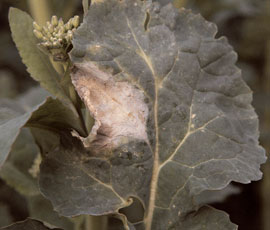Light leaf spot risk set to remain high

Phoma sprays could be required in the next few days as the South and East reach threshold levels, while there will be no let-up in light leaf spot risk next year, according to the latest Rothamsted Research predictions.
The wet, cool summer conditions have been favourable for both pathogens which cause phoma and light leaf spot in oilseed rape, said Neal Evans, European lead at agricultural and environmental research firm Weather INovations Incorporated.
The forecast, which is based on summer temperature and rainfall, predicts when growers might expect to see 10% phoma leaf spot at locations across the UK. “The North and West have already reached the threshold. But recent warm, dry weather has slowed phoma progress in the South and East, with the 10% threshold predicted this week.”
He urged growers to be vigilant, assess fields and treat where there are signs of leaf spotting. “This week will be crucial in getting on top of any phoma.”
With light leaf spot, predictions for next year suggest it will continue to be on the up. “It has always been high in the north of England and Scotland, but it has been seen much more in the South and East Anglia in recent years. The disease likes cold, dryer weather and harsh winters. It is thought that snow cover may act as a blanket while the infection continues to develop beneath the snow.”
The light leaf spot forecast is based on disease observed on pods, summer temperature plus winter rainfall, which at this early stage is based on the 30-year mean. But Dr Evans said the risk may be underestimated, as Crop Monitor data indicated pod inoculum was low, while there was a lot of stem infection. “It hadn’t reached the pods.”
Those growers concerned should sample their crop – about 50-100 plants – and incubate in plastic bags with moist tissue paper for four to five days at room temperature. If present, the fungus will start to sporulate and you will see how many plants are infected. If you have 20-25% plants infected, then you need to consider spraying, as now is the key time.”
See the predictions in full on Rothamsted Research’s dedicated predictions web page. Predictions will be updated next spring.

